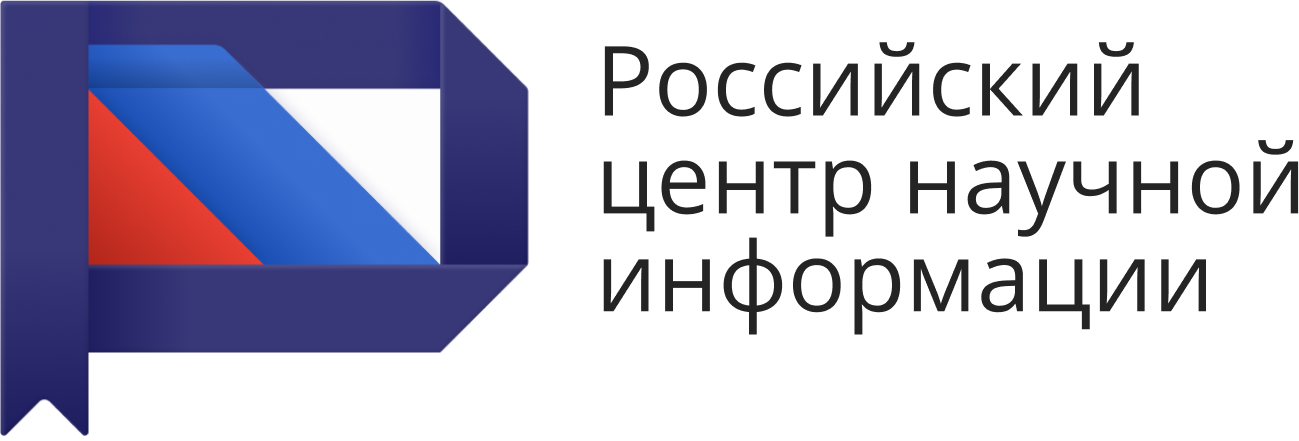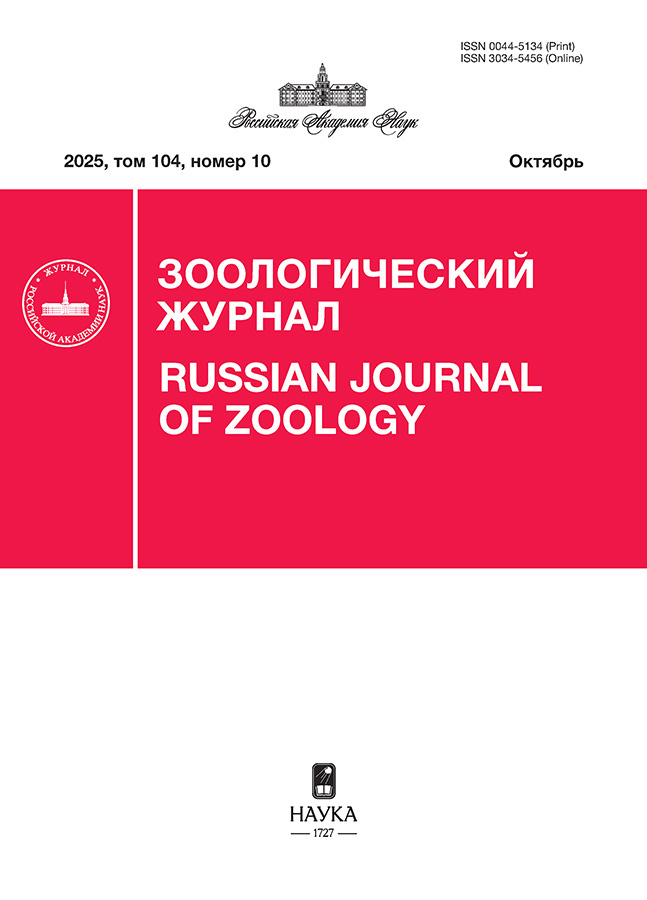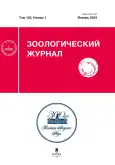Методические аспекты использования показателя частоты встречаемости для анализа ихтиоценозов на примере ихтиофауны прибрежной зоны балтийского моря
- Авторы: Шибаев С.В.1
-
Учреждения:
- Калининградский государственный технический университет
- Выпуск: Том 103, № 1 (2024)
- Страницы: 40-46
- Раздел: Статьи
- URL: https://journals.rcsi.science/0044-5134/article/view/258187
- DOI: https://doi.org/10.31857/S0044513424010054
- EDN: https://elibrary.ru/JJUBNO
- ID: 258187
Цитировать
Полный текст
Аннотация
Рассмотрена специфика использования показателя частоты встречаемости применительно к изучению видовой структуры рыбного сообщества. В отличие от гидробиологических исследований, лов рыбы производится различными по селективности орудиями (разноячейными сетями, мальковой волокушей с ячеей в мотне 5 мм, неводом закидным с ячеей в мотне 12 мм), что дает набор значений коэффициента встречаемости вида и обусловливает применение специального подхода к интерпретации результатов. В качестве объекта исследования использован прибрежный ихтиоценоз Балтийского моря в пределах Калининградской области. Отлов рыбы проводился в период 1990–2022 гг. на глубинах до 20 м с использованием набора ставных жаберных сетей с шагом ячеи от 12 до 80 мм. Всего обобщены данные по 894 обловам, в которых поймано 11.8 тыс. рыб. Показано, что частота встречаемости вида может быть представлена несколькими способами: 1) как средняя по уловам орудиями с разным набором ячей, 2) как максимальная по уловам орудиями с “оптимальным” шагом ячеи, 3) как структурная характеристика, определяющая видовую организацию ихтиоценоза. В целом установлено, что в уловах, полученных при использовании набора ставных сетей, прибрежный ихтиоценоз представлен 29 видами рыб, среди которых по встречаемости доминируют камбала речная, салака, бычок-кругляк и корюшка. При этом в межгодовом аспекте показатель встречаемости имеет определенную устойчивость и характеризуется доверительным интервалом ± 10–20%. Учитывая, что показатель встречаемости достаточно просто определяется на основе только регистрации факта поимки вида, рекомендуется его использование в дополнение к традиционным показателям относительной численности и биомассы вида. Обязательное условие – использование для оценки комплекса разноячейных орудий лова.
Ключевые слова
Полный текст
Показатель частоты встречаемости (fq), рассчитываемый как отношение количества наблюдений, в которых обнаружен тот или иной вид организма (Nsp), к общему количеству наблюдений (N), широко используется в гидробиологических исследованиях:
(1)
В случае изучения зоопланктона или зообентоса под количеством наблюдений понимается число проб, взятых, например, с помощью сети Джеди или дночерпателя Петерсена. Данные орудия лова дают тотальную пробу, в которой теоретические присутствуют все виды организмов. Вместе с тем показатель частоты встречаемости имеет универсальный характер и может применяться в том числе и для анализа видовой структуры рыбного населения. Но здесь, в отличие от гидробиологических исследований, возникает методологическая проблема следующего характера. Лов рыбы производится с помощью сетных орудий лова, которые обладают высокой размерной и видовой селективностью. В том случае, когда используется отцеживающие орудие лова типа трала или невода, в улове будут представлены все виды, размеры которых больше некоторой величины и которые не могут пройти через ячею. Эта минимальная длина обычно обозначается термином длина или возраст первой поимки (Бивертон, Холт, 1959; Шибаев, 2014). Мелкие виды просто не будут присутствовать в улове, и их встречаемость будет равна нулю. Таким образом, видовой состав населения, оцененный по частоте встречаемости видов в уловах отцеживающего орудия лова, будет неполным.
Еще более сложная картина складывается при использовании в исследованиях объячеивающих орудий типа ставных сетей. В сеть с определенным шагом ячеи улавливаются только рыбы нескольких размерных групп, которые могут объячеиваться, т. е. проходить в ячею дальше жаберных крышек, но не проходить в районе максимального обхвата тела перед первым спинным плавником. В результате оказывается, что исследователь получает для каждого вида целый массив значений частоты встречаемости в сетях с разным шагом ячеи. Встречаемость определяется как видом рыбы, так и ее размерами. Имея эти данные, исследователь задается вопросом – каким же образом можно характеризовать роль вида в ихтиоценозе.
Цель настоящей работы – анализ возможности применения показателя частоты встречаемости для характеристики структуры ихтиоценоза при использовании для отлова комплекса специальных разноячейных орудий.
МАТЕРИАЛ И МЕТОДИКА
Материалом для настоящей работы послужили комплексные рыбохозяйственные исследования, проведенные Калининградским государственным техническим университетом в период 1990–2022 гг. в прибрежной части Балтийского моря. Контрольные обловы проводились в пределах Калининградской обл. на глубинах до 20 м, где не ведется промысловый и научный траловый лов и поэтому структура ихтиоценоза неизвестна. Использовались ставные жаберные сети с шагом ячеи от 12 до 80 мм. Уловы подвергались стандартной обработке с проведением массовых промеров и биологического анализа стратифицированной выборки. Оригинальная методика исследования ихтиоценозов с использованием комплекса разноячейных сетей первоначально была разработана применительно к малым водоемам (Шибаев, Соколов, 2014, 2014а; Shibaev et al., 2022), а затем адаптирована для морских исследований в прибрежной зоне. Использование пассивных орудий лова типа ставных сетей имеет определенные преимущества при изучении прибрежных ихтиоценозов. Это связано с тем, что в связи с высокой прозрачностью воды рыба, в особенности крупная, хорошо видит активные орудия лова и может их избегать. В результате неводы в прибрежной зоне могут рассматриваться лишь как вспомогательные орудия лова, которые дают характеристику относительно мелких рыб.
Всего было проведено 894 облова, в которых поймано 11.8 тыс. рыб. Математическая обработка большого объема первичного материала велась с использованием авторской информационно-аналитической системы “Рыбвод” (Шибаев, 2004; Шибаев и др., 2009).
РЕЗУЛЬТАТЫ И ОБСУЖДЕНИЕ
Результаты исследований, проведенных за более чем двадцатилетний период с использованием большого количества обловов, позволяют с достаточной степенью надежности характеризовать прибрежное рыбное сообщество на основании анализа частоты встречаемости. В целом в составе прибрежного ихтиоценоза Балтийского моря по данным уловов набора ставных разноячейных сетей обнаружено 29 видов рыб, частота встречаемости которых колебалась в очень широких пределах – от десятых долей до 81% (табл. 1). Вероятность обнаружения в уловах тех или иных видов зависела как от их биологических особенностей, так и от индивидуальных размеров и морфометрических характеристик. В этой связи различные виды могли попадаться в сети с определенным шагом ячеи с большей или меньшей вероятностью. Так, мелкие виды – корюшка, бычки, песчанка, шпрот – улавливались сетями с ячеей 12–16, и здесь их частота встречаемости существенно выше; крупные виды – треска, кумжа, судак – встречаются преимущественно в крупноячейных сетях с шагом ячеи более 50 мм и не улавливаются в орудия лова с мелкой ячеей. Таким образом, прибрежный ихтиоценоз характеризуется большим массивом первичных данных по частоте встречаемости разных видов (табл. 1), которые достаточно сложно анализировать. Возникает необходимость выделить некоторые критерии, которые бы однозначно характеризовали роль каждого вида в формировании рыбного сообщества.
Таблица 1. Частота встречаемости (%) различных видов рыб в прибрежной зоне Балтийского моря в ставных жаберных сетях
№ | Вид | Шаг ячеи, мм | |||||||||||||||
12 | 14 | 16 | 18 | 20 | 22 | 24 | 26 | 30 | 35 | 40 | 45 | 50 | 60 | 70 | 80 | ||
1 | Камбала речная (Platichthys flesus trachurus (Duncker)) | 27.9 | 23.4 | 41.2 | 36.7 | 39.6 | 44.7 | 42.9 | 22.0 | 48.3 | 81.4 | 43.2 | 59.7 | 62.7 | 70.8 | 67.9 | 72.7 |
2 | Сельдь балтийская (салака) (Clupea harengus membras (L.)) | 25.6 | 36.2 | 52.9 | 65.3 | 45.8 | 38.3 | 39.3 | 29.3 | 24.1 | 32.2 | 13.6 | 17.7 | 8.4 | 12.5 | 14.3 | 9.1 |
3 | Бычок-кругляк (Neogobius melanostomus (Pallas)) | 25.6 | 36.2 | 29.4 | 34.7 | 52.1 | 42.6 | 32.1 | 22.0 | 22.4 | 13.6 | 4.5 | 1.6 | 1.2 | |||
4 | Корюшка европейская (Osmerus eperlanus eperlanus (L.)) | 32.6 | 25.5 | 23.5 | 16.3 | 25.0 | 8.5 | 14.3 | 17.1 | 15.5 | 16.9 | 11.4 | 6.5 | 3.6 | |||
5 | Окунь пресноводный (Perca fluviatilis (L.)) | 3.9 | 8.2 | 14.6 | 27.7 | 19.6 | 17.1 | 15.5 | 18.6 | 9.1 | 11.3 | 7.2 | 8.3 | ||||
6 | Треска (Gadus morhua calarias (L.)) | 3.9 | 4.2 | 4.3 | 7.1 | 2.4 | 13.8 | 13.6 | 15.9 | 12.9 | 20.5 | 37.5 | 17.9 | 4.5 | |||
7 | Камбала-тюрбо (Scophthalmus maximus (L.)) | 2.1 | 2.1 | 4.3 | 1.8 | 9.8 | 8.6 | 13.6 | 4.5 | 6.5 | 18.1 | 45.8 | 17.9 | 13.6 | |||
8 | Судак (Stizostedion lucioperca (L.)) | 4.7 | 3.9 | 6.1 | 2.1 | 10.6 | 16.1 | 2.4 | 1.7 | 11.9 | 8.1 | 7.2 | 16.7 | 3.6 | |||
9 | Рыбец (Vimba vimba vimba (L.)) | 2.0 | 2.1 | 2.1 | 3.6 | 2.4 | 10.3 | 16.9 | 4.5 | 11.3 | 4.8 | 4.2 | 4.5 | ||||
10 | Финта атлантическая (Alosa fallax fallax (Lacepede)) | 2.3 | 2.0 | 6.4 | 12.5 | 7.3 | 6.9 | 3.4 | 4.8 | 3.6 | |||||||
11 | Шпрот (Sprattus sprattus balticus (Schneider)) | 20.9 | 4.3 | 2.0 | 8.2 | 4.2 | 1.8 | 1.7 | |||||||||
12 | Кумжа (Salmo trutta trutta (L.)) | 1.7 | 3.4 | 4.8 | 16.7 | 21.4 | |||||||||||
13 | Скумбрия атлантическая (Scomber scombrus (L.)) | 6.1 | 6.4 | 1.8 | 1.7 | 1.2 | 3.6 | 9.1 | |||||||||
14 | Песчанка балтийская (Ammodytes tobianus (L.)) | 7.0 | 2.1 | 3.9 | 2.1 | 2.1 | 5.4 | 2.4 | |||||||||
15 | Плотва (Rutilus rutilus (L.)) | 2.1 | 4.3 | 2.4 | 1.7 | 1.6 | 2.4 | 4.2 | 3.6 | ||||||||
16 | Лещ (Abramis brama (L.)) | 2.3 | 1.6 | 1.2 | 8.3 | 10.7 | |||||||||||
17 | Бельдюга (Zoarces viviparus (L.)) | 4.7 | 2.1 | 3.9 | 1.7 | ||||||||||||
18 | Кеpчак (Triglopsis scorpius (L.)) | 3.6 | 1.7 | 4.2 | |||||||||||||
19 | Сиг (Coregonus lavaretus lavaretus (L.)) | 12.5 | |||||||||||||||
20 | Лосось атлантический (семга) (Salmo salar (L.)) | 1.6 | 4.2 | 3.6 | |||||||||||||
21 | Карась серебряный (Carassius auratus gibelio (Bloch.)) | 1.7 | 1.2 | ||||||||||||||
22 | Угорь речной европейский (Anguilla anguilla (L.)) | 2.0 | 1.7 | ||||||||||||||
23 | Густера (Blicca bjoerkna (L.)) | 8.3 | |||||||||||||||
24 | Пинагор (Cyclopterus lumpus (L.)) | 1.7 | |||||||||||||||
25 | Елец (Leuciscus leuciscus (L.)) | 1.7 | |||||||||||||||
26 | Осетр остроносый (Acipenser oxyrinchus) | 2.3 | |||||||||||||||
27 | Язь (Leuciscus idus (L.)) | 3.6 | |||||||||||||||
28 | Щука (Esox lucius (L.)) | 4.2 | |||||||||||||||
29 | Сарган европейский (Belone belone (L.)) | 2.1 | |||||||||||||||
Для этого могут быть использованы два показателя:
fqavg – средняя частота встречаемости данного вида, рассчитанная с учетом встречаемости при применении всего набора сетей (с разным размером ячей);
fqmax – максимальная частота встречаемости данного вида в сети с шагом ячеи, наиболее соответствующим размерной структуре группировки, приуроченной к прибрежной зоне. Этот шаг ячеи можно назвать “оптимальным”, т. к. он в наибольшей степени обеспечивает попадание данного вида в улов.
Таблица 2. Средние и максимальные значения частоты встречаемости видов рыб, интегрированные по всем сетям с шагом ячеи 12–80 мм
№ | Вид | Встречаемость, % | Оптимальный шаг ячеи, мм | |
Средняя fqavg | Максимальная fqmax | |||
1 | Камбала речная | 48.69 | 81.36 | 35 |
2 | Сельдь балтийская (салака) | 29.79 | 65.31 | 18 |
3 | Бычок-кругляк | 20.60 | 52.08 | 20 |
4 | Корюшка европейская | 14.17 | 32.56 | 12 |
5 | Окунь пресноводный | 10.89 | 27.66 | 22 |
6 | Треска | 9.71 | 37.50 | 60 |
7 | Камбала-тюрбо | 8.14 | 45.83 | 60 |
8 | Судак | 6.17 | 16.67 | 60 |
9 | Рыбец | 4.86 | 16.95 | 35 |
10 | Финта атлантическая | 3.28 | 12.50 | 24 |
11 | Шпрот | 2.62 | 20.93 | 12 |
12 | Кумжа | 2.23 | 21.43 | 70 |
13 | Скумбрия атлантическая | 1.57 | 9.09 | 80 |
14 | Песчанка балтийская | 1.57 | 6.98 | 12 |
15 | Плотва | 1.31 | 4.26 | 22 |
16 | Лещ | 1.05 | 10.71 | 70 |
17 | Бельдюга | 0.79 | 4.65 | 12 |
18 | Кеpчак | 0.52 | 4.17 | 60 |
19 | Сиг | 0.39 | 12.50 | 60 |
20 | Лосось атлантический (семга) | 0.39 | 4.17 | 60 |
21 | Карась серебряный | 0.26 | 1.69 | 35 |
22 | Угорь речной европейский | 0.26 | 2.04 | 18 |
23 | Густера | 0.26 | 8.33 | 60 |
24 | Пинагор | 0.13 | 1.69 | 35 |
25 | Елец | 0.13 | 1.69 | 35 |
26 | Осетр остроносый | 0.13 | 2.27 | 40 |
27 | Язь | 0.13 | 3.57 | 70 |
28 | Щука | 0.13 | 4.17 | 60 |
29 | Сарган европейский | 0.13 | 2.13 | 14 |
Предложенные частоты встречаемости (табл. 2) позволяют сделать выводы о роли отдельных видов в формировании ихтиоценоза. Наиболее важным, постоянно присутствующим элементом сообщества является речная камбала, средняя встречаемость которой составляет 48.69%, а максимальная, характерная для шага ячеи, равного 35 мм, равна 81.6%. Салака и бычок-кругляк занимают второе и третье места в формировании сообщества – средняя их встречаемость 20–30%, а максимальная – 50–65%, причем для этих видов оптимальный размер ячеи 18–20 мм.
При этом большое количество видов (14) имеют частоту встречаемости менее 1%. Вероятно, это связано либо с мозаичностью прибрежных биотопов, либо с временной динамикой структуры ихтиоценоза, т. к. в расчетах использованы данные по уловам, проведенным в течение всего года.
Согласно результатам регрессионного анализа, между показателями средней и максимальной встречаемости существует достаточно тесная связь с высоким коэффициентом линейной корреляции R = 0.935, что позволяет использовать как первый, так и второй показатели (рис. 1).
Рис. 1. Максимальная (по вертикальной оси) и средняя частота (по горизонтальной оси) встречаемости, %.
Для определения устойчивости показателей встречаемости можно оценить статистические характеристики средней встречаемости в межгодовом аспекте, например рассчитать доверительный интервал. Как оказалось (рис. 2), за достаточно большой период наблюдения для большинства видов рыб доверительный интервал частоты встречаемости составлял ± 10–20%. Лишь для редких видов он был существенно выше. Например, для кумжи межгодовые колебания встречаемости в уловах в прибрежной зоне достигали ± 30%. Очевидно, что это связано с характером миграций данного вида. Кумжа совершает определенные перемещения в открытом море в течение года и лишь в нерестовой период подходит к устьям рек. В результате встречаемость вида кратковременно повышается в уловах в прибрежной зоне.
Рис. 2. Межгодовая вариабельность средней частоты встречаемости.
Показатель частоты встречаемости позволяет получить характеристику присутствия в ихтиоценозе не только какого-либо вида, но и проанализировать структуру рыбного сообщества с точки зрения роли отдельных видов в его формировании. С этой целью введем показатель “относительная встречаемость”.
Под относительной частотой встречаемости будем понимать долю (или процент) встречаемости какого-либо вида от суммарной встречаемости всех видов:
(2)
где i – номер вида, n – количество видов.
По определению, частота встречаемости вида может изменяться в пределах от нуля до 100%. Поэтому расчет по уравнению (2) позволяет нормализовать значение таким образом, что сумма встречаемости всех видов будет равна 100%.
Возможны два варианта анализа относительной встречаемости.
- С целью характеристики ихтиоценоза в целом можно представить его структуру графически в виде круговой диаграммы (рис. 3). Такой подход позволяет констатировать, что основу прибрежного ихтиоценоза по встречаемости составляют камбала речная, салака и бычок-кругляк. Менее часто в уловах регистрируются окунь, треска, камбала-тюрбо, судак, финта, частота встречаемости которых составляет 1–10%.
Рис. 3. Структура ихтиоценоза прибрежной зоны Балтийского моря по средней частоте встречаемости.
- Использование показателя частоты встречаемости видов для каждого шага ячеи позволяет получить размерно-видовую характеристику ихтиоценоза (рис. 4), которая еще в большей степени может характеризовать ее организацию. Как видно из рис. 4, камбала по встречаемости формирует около 20–30% сообщества, причем в зоне выборки особей больших размеров значение этого вида возрастает. И наоборот, салака, бычок-кругляк и корюшка формируют мелкоразмерную часть ихтиоценоза, обеспечивая до 60% встречаемости. Прочие виды составляют оставшиеся 20%.
Рис. 4. Размерно-видовая структура прибрежного ихтиоценоза Балтийского моря, рассчитанная по частоте встречаемости видов в уловах сетей с различным шагом ячеи.
ЗАКЛЮЧЕНИЕ
Показатель частоты встречаемости является достаточно простым, т. к. оценивается только по факту регистрации вида в улове. В случае исследования ихтиоценозов роль того или иного вида рыб может быть оценена по частоте его встречаемости: как средней величиной этого показателя при лове комплексом орудий с разным размером ячей, так и его максимальной величиной при лове орудиями с оптимальным шагом ячеи. При этом использование ограниченного набора ячей не является приемлемым, т. к. сетные орудия лова обладают высокой видовой и размерной селективностью и определенные виды или размерные группы не будут представлены.
Интеграция показателя встречаемости видов позволяет получить некоторую характеристику видовой структуры рыбного населения, а с учетом селективных свойств орудий – размерно-видовую структуру.
Таким образом, частота встречаемости может рассматриваться как самостоятельная характеристика ихтиофауны вместе с традиционным описанием структуры рыбного населения (соотношение показателей численности или ихтиомассы различных видов). Обязательное условие – использование для оценки комплекса разноячейных орудий лова.
Об авторах
С. В. Шибаев
Калининградский государственный технический университет
Автор, ответственный за переписку.
Email: shibaev@klgtu.ru
Россия, Советский просп., 1, Калининград, 236022
Список литературы
- Бивертон Р., Холт С., 1959. Динамика численности промысловых рыб. М.: Пищевая промышленность. 248 с.
- Шибаев С.В., 2004. Системный анализ в рыбохозяйственных исследованиях. Калининград: Изд-во КГТУ. 311 с.
- Шибаев С.В., 2014. Промысловая ихтиология. Издание второе. Калининград: ООО “Аксиос”. 535 с.
- Шибаев С.В., Алдушин А.В., Чиклиненков В.С., Осадчий В.М., 2009. Концепция информационного обеспечения управления водными биоресурсами внутренних водоемов и прибрежных морей и ее реализация на примере Калининградской области // Рыбное хозяйство. № 3. С. 42–45.
- Шибаев С.В., Соколов А.В., 2014. Метод анализа ихтиоценозов малых озер Калининградской области на основе контрольных обловов сетных орудий лова // Труды ВНИРО. Т. 151. С. 158–164.
- Шибаев С.В., Соколов А.В., 2014а. Структура донного ихтиоценоза озера Виштынецкого Калининградской области // Известия КГТУ. Вып. 32. С. 11–20.
- Shibaev S., Novozhilov O., Baranovsky P., 2022. Using the Gill Nets Survey for Assessment of Fish Stock and Allowable Catch in the Vistytis Lake, Kaliningrad Oblast, Russia // In: Arkhipov A.G. (eds). Sustainable Fisheries and Aquaculture: Challenges and Prospects for the Blue Bioeconomy. Environmental Science and Engineering. Springer, Cham. https://doi.org/10.1007/978-3-031-08284-9_20
Дополнительные файлы














